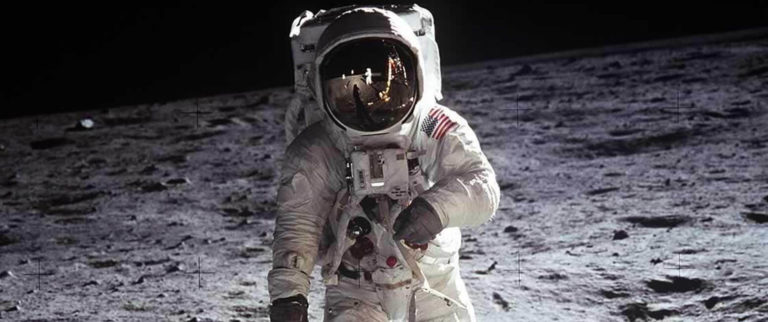In the summer of 1969, I was a 9-year-old boy doing the kinds of things 9-year-old boys do: Little League baseball, riding my bike and playing games with neighbors in the cul de sac across the street from our house in Hometown, Ill.
A highlight every summer was the Our Lady of Loretto Parish picnic, at the Swallow Cliff Forest Preserve about 10 miles farther into Chicago’s southwest suburbs. In the winter, we visited the toboggan runs, but during the summer, the area provided tons of space for the children of the parish to run and play. We kept busy with sack races, balloon tosses and other picnic games on the woods’ “front lawn” that led up to a steep, 100-foot bluff.
The parish picnic always fell on a Sunday afternoon; in 1969, that was July 20.
While we ran and played and ate picnic food, a quarter-million miles above us, humans were attempting a feat that had never been accomplished. Neil Armstrong and Edwin “Buzz” Aldrin, along with command module pilot Michael Collins, orbited the moon, readying for a landing.

As we cleaned up at the end of the picnic – around 3 p.m. – someone strung several extension cords from a maintenance shed to our picnic site. There, gathered around a small, portable, black-and-white TV, we watched as Armstrong and Aldrin touched down at 3:17 p.m. “Houston: Tranquility Base here. The Eagle has landed.”
I get goosebumps just thinking about it even now.
In the intervening five decades, we have seen the advent and retirement of the Space Shuttle program. With other countries’ cooperation, we built the International Space Station. In fact, the station is now large enough – longer than a football field – that you can see it passing overhead, usually a few hours before dawn or after sunset when the sky is dark enough, and the station reflects the rising or setting sun. It’s amazing that we can see something created by humans circling 250 miles above the globe at 17,000 miles an hour. (You can find your next potential sighting of the station at spotthestation.nasa.gov.)
Now, private companies are getting into the game. Elon Musk even sent his Tesla Roadster, with a dummy driver at the wheel, into space on a Falcon Heavy rocket.
NASA has announced that private astronauts (space tourists) may be able to visit the space station for up to 30 days beginning next year – at a cost of more than $50 million.
And the United States is working on another mission to the moon, as a stepping stone to Mars. “The moon is a treasure chest of science that holds many fascinating mysteries to explore – many that will advance our understanding of our home planet and solar system, as well as the cosmos beyond,” according to the NASA website.
Why do all this? Scientists at the Vatican Observatory point out that humans seek something beyond us. Jesuit Father Richard D’Souza, one of the Vatican astronomers, told Catholic News Service, “The most transcendental thing you can have is God. … Astronomy is the most transcendental of the sciences and yet most physical, and that is the reason perhaps it has long fascinated everyone in history.”
What we learn by exploring our world, our moon and our solar system contribute to the knowledge base for all people. Developments in space have tangible benefits here at home, in medicine and other fields.
God created the universe and endowed humans with curiosity. Armstrong’s “One small step for a man, one giant leap for mankind” was no hyperbole.


